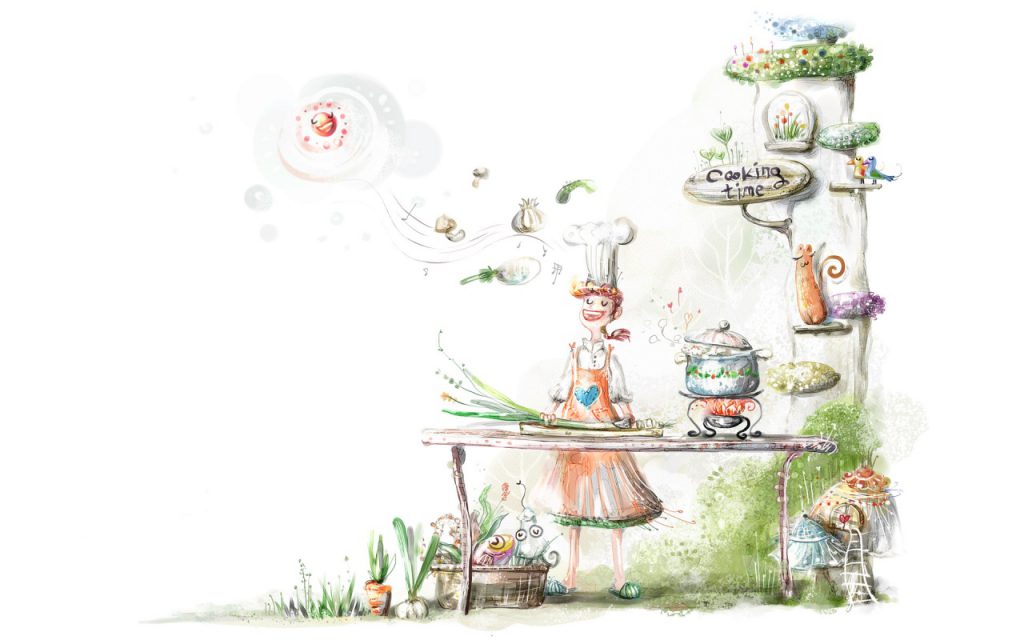
Italian cooking
Italian cooking is renowned worldwide for its simplicity, quality of ingredients, and deep connection to tradition and regional diversity. Rooted in the Mediterranean diet, it emphasizes fresh, seasonal ingredients like tomatoes, olive oil, garlic, herbs, and an array of vegetables. Pasta, pizza, and risotto are among the most famous Italian dishes, but the cuisine extends far beyond these, with each region boasting its own specialties and techniques.
What sets Italian cooking apart is the philosophy of letting ingredients shine. The dishes often have only a few components, but each is of the highest quality and prepared with care. This approach highlights the integrity of the ingredients, whether it’s a simple spaghetti aglio e olio or a complex lasagna. The importance of family, communal meals, and a respect for tradition also plays a big role, as recipes are passed down through generations, preserving Italy’s rich culinary heritage.
Regional cousine
Italian regional cuisine is a vibrant tapestry of flavors, techniques, and ingredients, shaped by geography, climate, history, and local traditions. Each of Italy’s 20 regions has its own distinctive culinary identity, making Italian food incredibly diverse. From the hearty dishes of the north to the lighter, sun-kissed recipes of the south, regional Italian cuisine reflects the unique character of each area.
Northern Italy: Rich and Refined
The cuisine of northern Italy is often more buttery and creamy compared to the olive oil-based dishes of the south. Rice, polenta, and stuffed pastas like tortellini and ravioli are staples, along with cheeses such as Parmigiano Reggiano and Gorgonzola.
- Piedmont is known for rich dishes like bagna càuda (a warm dip of anchovies and garlic) and vitello tonnato (veal with tuna sauce), as well as the prized white truffles of Alba.
- Lombardy is famous for risotto alla Milanese, a creamy saffron-infused rice dish, and osso buco, a slow-cooked veal shank.
- Veneto, home to Venice, boasts risotto al nero di seppia (risotto with cuttlefish ink) and baccalà mantecato(creamed salt cod).
Central Italy: Rustic and Hearty
Central Italy, particularly regions like Tuscany, Umbria, and Lazio, embraces simple, rustic cuisine that showcases fresh, seasonal ingredients. Bread, olive oil, beans, and roasted meats are central to many dishes.
- Tuscany is known for its minimalistic, earthy dishes like ribollita (a bread and vegetable soup), bistecca alla Fiorentina (Florentine steak), and pappa al pomodoro (tomato and bread soup).
- Umbria, often called Italy’s “green heart,” specializes in pork, game meats, and black truffles, with dishes like pasta alla norcina (pasta with sausage and cream) and torta al testo (a flatbread).
- Lazio, home to Rome, offers iconic pasta dishes such as spaghetti alla carbonara, cacio e pepe, and bucatini all’amatriciana. Roman cuisine is also famous for its use of offal in dishes like trippa alla romana (tripe) and coda alla vaccinara (oxtail stew).
Southern Italy: Bold and Simple
Southern Italian cuisine is characterized by its robust flavors, abundant use of fresh vegetables, olive oil, and seafood. Dishes tend to be lighter yet full of flavor, reflecting the warmer climate and Mediterranean lifestyle.
- Campania is the birthplace of some of Italy’s most famous dishes, including pizza (from Naples), spaghetti alla puttanesca, and mozzarella di bufala. The Amalfi Coast is renowned for its lemons, used to make limoncello.
- Sicily is a melting pot of flavors influenced by centuries of Arab, Greek, and Spanish rule. Caponata (eggplant salad), arancini (fried rice balls), and sweets like cannoli and cassata are hallmarks of Sicilian cuisine.
- Calabria is known for its bold, spicy dishes, often featuring nduja (spicy spreadable pork sausage) and preserved vegetables. Its cuisine reflects the region’s agricultural bounty, including olives, figs, and citrus fruits.
Islands: Sicily and Sardinia
The islands of Italy bring their own unique culinary flair. Sicily, as mentioned, blends Mediterranean and Middle Eastern influences, while Sardinia offers dishes that reflect its pastoral lifestyle, such as porceddu (roast suckling pig), pane carasau (crispy flatbread), and fregola (a type of pasta similar to couscous).
Regional Wines and Cheeses
Each region also boasts its own celebrated wines and cheeses. For example, Barolo and Barbaresco from Piedmont, Chianti from Tuscany, and Prosecco from Veneto are iconic wines. As for cheeses, Parmigiano Reggiano from Emilia-Romagna, Pecorino Romano from Lazio, and Mozzarella di Bufala from Campania are among the best-known varieties.
In summary, Italian regional cuisine is a reflection of the country’s diversity and passion for good food, where every dish tells the story of its people, land, and history. Whether it’s the rich, creamy dishes of the north or the bright, bold flavors of the south, Italian cooking is deeply tied to its regional roots.